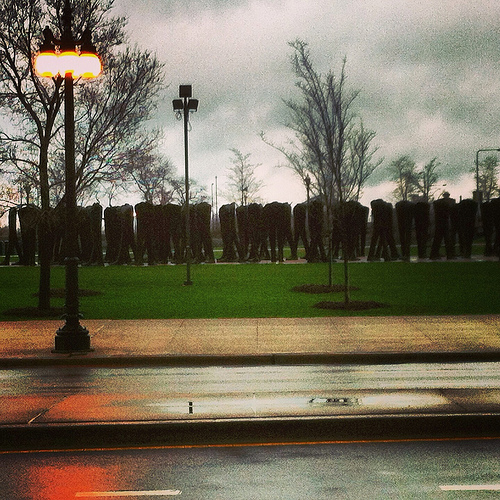
How we come up with stories
[flickr id=”8680494121″ thumbnail=”medium” overlay=”true” size=”original” group=”” align=”none”]
We play a lot of games in class. It is meant to be generative and to help us get to that creative place where anything can happen.
We start in a semi-circle. The teacher sits looking at the circle and facilitates a game called “One Word.” Sometimes, we play a different game, but it’s almost always—at least in my experience—this configuration. We start spit-balling words and saying unplanned things, going around the semi-circle. So, someone can say “House,” but the next person can’t say “Apartment” because it is related. Instead, we listen for surprise words in the back of our minds.
We do this a few times, going around the circle, and every few rounds, we will stop and be asked what we saw. A scene? A character? A moment in ongoing material? We start to shape these and are asked about gestures. Sometimes, we give words and associate gestures with them. We will continue with another round of finding words, then we will move to “Take A Place,” which is when we envision a place and start imagining the words or characters or scenes or gestures there.
From this, we will go around and give objects that can be manipulated. You try to see if any of them will fit in your place, if any of them will help with the story or not. If not, you ignore. Then, we will do a round of finding verbs, and finally, we will begin writing the scenes. Sometimes, the teacher will stop us and make us change perspectives or shift to later in the story. Ultimately, we come up with many ideas.
This seems to really work, and this is what our school is known for—getting the students to WRITE. So, we do. Right now, I’m writing about a paperclip. It was my object, and then I remembered something that I had my students do with a paper clip, and I am using that story as the framework of a memoir piece about love and relationships and arguing. It all came about in on of these word games.
